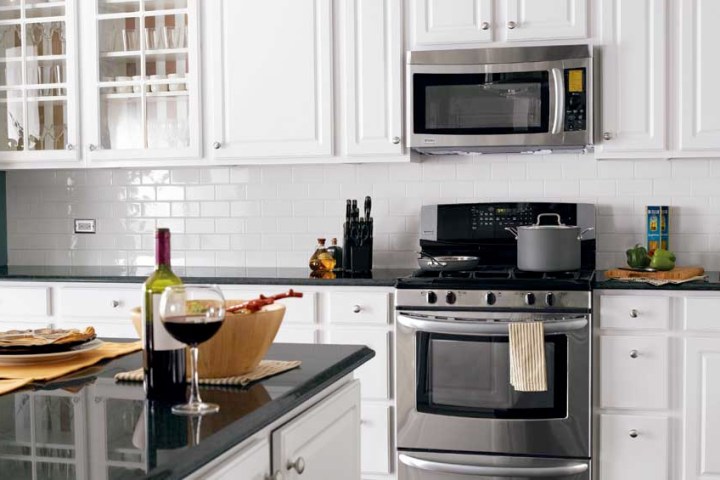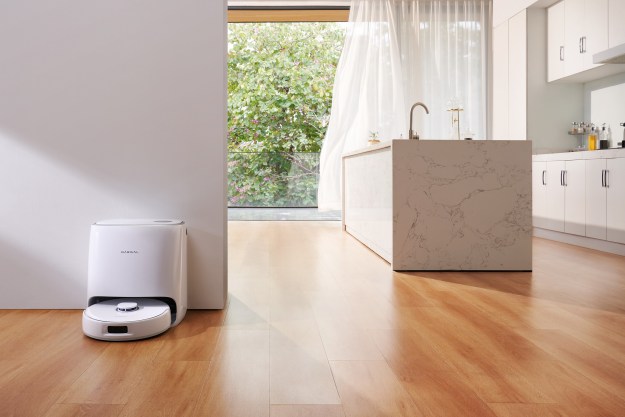
Human beings take a number of measures to keep ourselves and our surroundings free from harmful bacteria. We routinely wash our hands, clean our homes, and carefully prepare our food to avoid cross contamination. But despite all that, we often fail to clean the places where bacteria tends to gather and fester.
We’ve all heard that the sponge is the germiest article in the kitchen. According to Charles Gerba, Professor of Microbiology at the University of Arizona, after that comes the sink, and then the cutting board. But you’d be surprised at the other places where germs gather.
Gerba was part of a study, where he and his colleagues measured fecal coliform bacteria on kitchen and bathroom surfaces (yeah, you read that right, we said “fecal”). The items he listed contained the highest densities of coliform, fecal coliform, and HPC bacteria, according to the results of the study.
Here at Digital Trends, we wanted to find out what tech in the kitchen is covered with nasty bacteria, and were surprised at the answer. Hint: check your appliances.
Appliance handles
How often do you disinfect the area behind your refrigerator door handle? If this isn’t part of your regular cleaning regimen, it should be, as it can become a pretty gross place.

“They tend to get fecal bacteria on them probably because of opening by children and removing and placing raw meat products in the refrigerator,” Gerba told Digital Trends.
Hidden bacteria can also lurk in places where your hands touch, but your disinfectant spray doesn’t reach. Think the area behind your oven handle, your sink handle, or under your dishwasher handle. Good idea to give them a good, thorough cleaning.
Refrigerator veggie and meat compartments
Refrigerators can now do some pretty amazing things. The LG Instaview Door-in-Door Counter Depth Fridge allows you to press a button on the door handle and quickly grab an item in the right door while the rest of the fridge remains closed. But, as smart as your refrigerator may be, it still probably can’t clean its own interior drawers and shelves, which are some of the dirtiest places in your kitchen.

You may be surprised to learn that your vegetable drawer may contain all sorts of disturbing and potentially harmful bacteria. The National Sanitation Foundation had a team of microbiologists analyze kitchen appliances and tools to see if they contained bacteria. The results indicated that salmonella, listeria, yeast, and mold were hanging out in the refrigerator vegetable compartments they tested. Let us remind you that that’s where you put your vegetables and fruits.
The NSF study also found that like the veggie drawer, the meat compartment may have salmonella, yeast, and mold. But your meat drawer could also include yet another nasty culprit — E.coli bacteria.
Can openers
Bacteria can hide on small kitchen appliances and gadgets too. If you have an electric can opener, you may notice buildup and grime on the circular ring that cuts the can open. If your electric can opener is really old, or if you seldom clean it, you may notice that buildup and grime extends to other parts of the machine.

An electric can opener can be difficult to clean, as some parts of the cutting ring and the surrounding areas aren’t easily accessible for cleaning. When studying the cleanliness of can openers, the NSF International study found they contained salmonella, E.coli, yeast, and mold. That can of tuna doesn’t sound so appetizing right now, does it?
Seals and gaskets on gadgets and appliances
Many kitchen appliances and gadgets have a rubber seal or gasket to help prevent air or liquid from escaping. Think the rubber strip around the perimeter of a large food storage container. These seals can contain all sorts of bacteria like yeast, mold, and even salmonella or E.coli.
The same applies to gaskets and stripping on appliances, like the gasket on your blender or the stripping around the refrigerator door that helps keep it closed. Who would think to clean the stripping on a refrigerator door? Better get to it.
The ice machine
Some people think that because an ice maker is in a freezer, bacteria can’t breed or multiply. Well, the ice maker can be another surprisingly yucky place.
You may have heard about how restaurant ice machines can be downright disgusting. But, did you know the ice machine in your freezer can accumulate bacteria too? Sometimes, people put their hands in the ice bin, which can be a source of bacteria. Other times, food makes its way into the ice maker.

Discover Magazine published a study analyzing ice samples from household freezers, bars and pubs, and sales packages. Of the samples analyzed, the ice from households and bars and pubs had the highest cell densities of bacteria.
“Fifty-two strains representing 31 species of eight bacterial genera were identified, with the most numerous groups included in Pseudomonas, Staphylococcus, Bacillus and Acinetobacter,” according to the study.
Now, it may sound scary to hear that ice can contain bacteria that’s associated with dangerous illnesses. But, on the bright side, many of the drinks we pour over the ice can kill the bacteria.
What to do about bacteria on your appliances
So, now that we know our homes are covered in all these germs, should we get out the Lysol and spray everything in sight? Yes.
It’s probably a good idea to give a bit more love to these hidden bacterial areas while you’re cleaning. Maybe wipe out the veggie and meat drawers in the fridge every once in a while, clean your ice machine more often, wipe your can opener a bit more thoroughly, and remember to spray behind your appliance handles with a bleach or antibacterial cleaner.
Editors' Recommendations
- Are smart kitchen gadgets worth it?
- The future of the connected kitchen is just a push of a button away
- WPC unlocks details of its Ki wireless power standard for kitchen appliances


